Catalog Laundry Care
Context: University of Washington, Winter 2019
Team: Grace Rose, Charlie Jellison, Me
Team: Grace Rose, Charlie Jellison, Me
Description
There are many people, especially college students, that don’t know how to sort their laundry to avoid garment damage. This laundry bag system teaches you to sort your laundry through a visual and tactile system. Printed on the front are texts to distinguish between the color and delicacy of materials. The crosses are different types of materials to help sort garments by feeling what materials go where. Another visual cue for sorting is the matching system printed on the inside of the bags. This system is used by matching the symbols on the clothe's tag to the symbols printed on the bags. The bags come on a wooden frame that makes it easy to read and use when it’s laundry time.
Process
We worked in a group of three people for the design of the Catalog Laundry Care. Our original idea was a care tag, but through further research our team switched to a sorting laundry system.
My Part
I was responsible for sewing the bags. One member was responsible for creating the frame and the other member sewed the cross patches. Together we laser printed the writing on the bags.
The Problem
Maintenance and Repair
We sent out a questionnaire to a variety of ages in order to determine what things people tend to care about the most. We found that clothing and shoes were one of the more popular items. This helped us narrow our focus to textile care and repair.
How might we...
- make knowledge about textile care more accessible and readily available
- create a more affordable method for textile repair?
- make the process of repairing clothing quick and convenient?
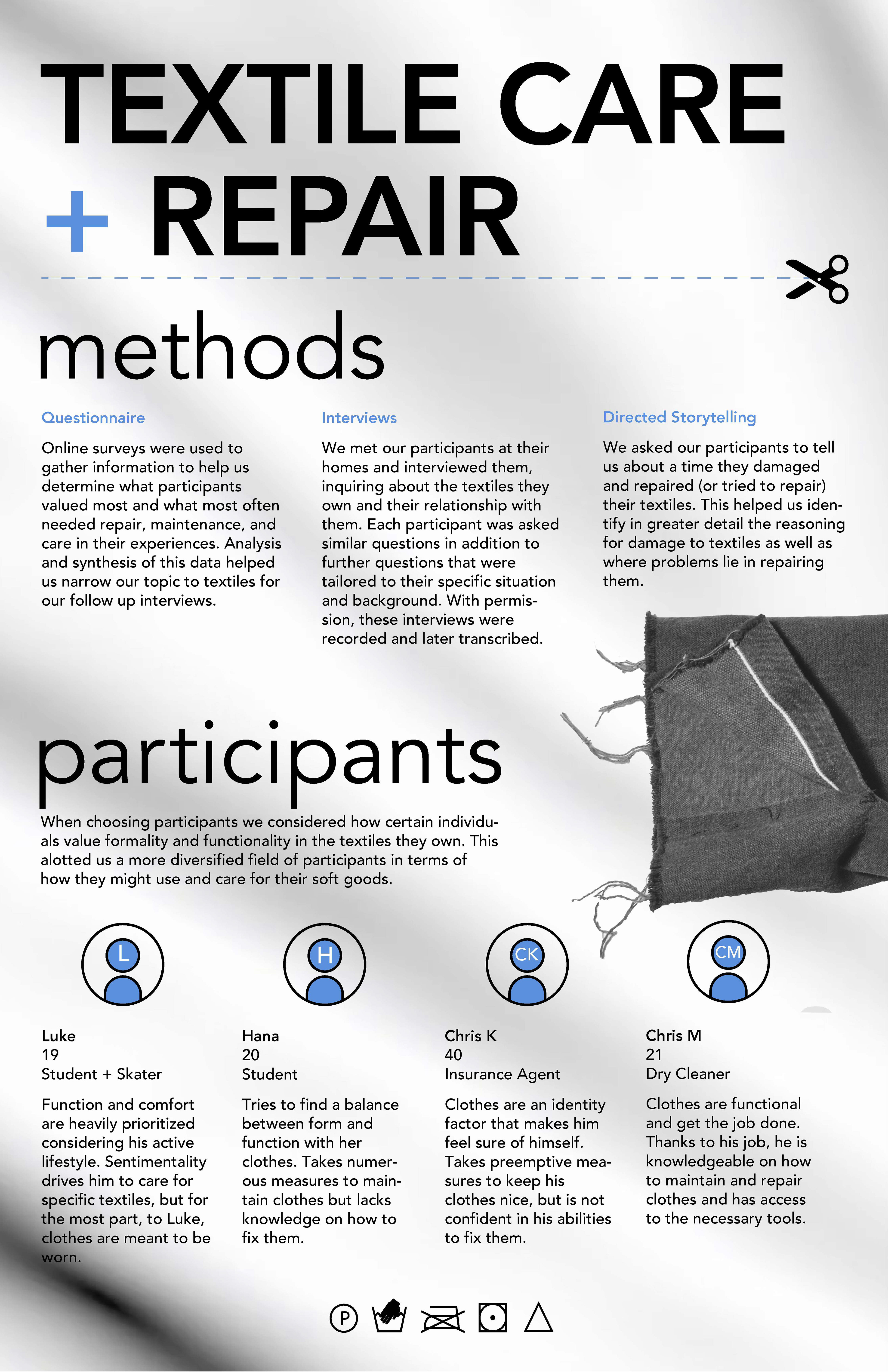
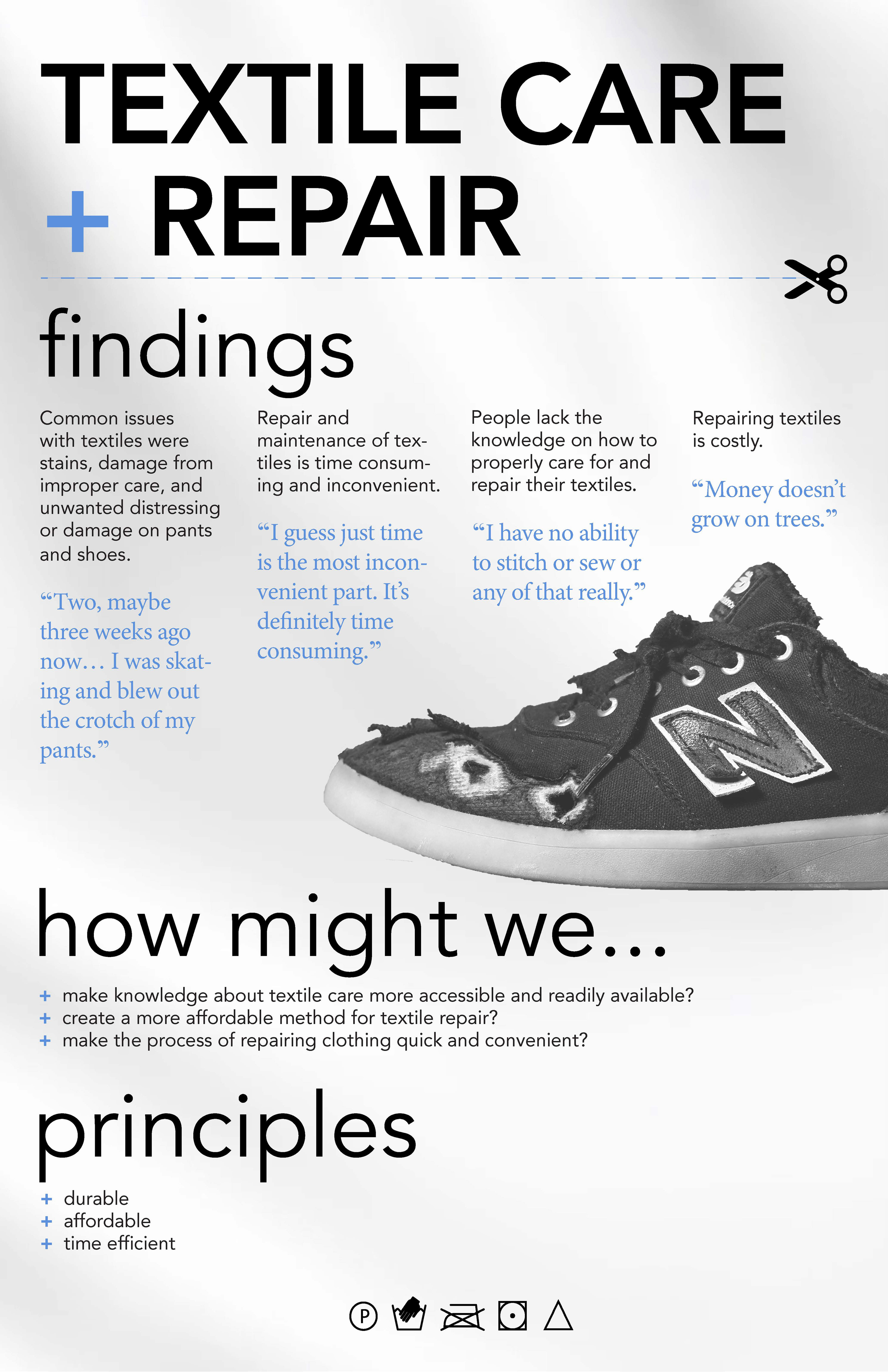
Ideation
Brain Storming
As a group we each came up with 20 ideas, making a total of 60 sketches. This exercise helped us build off of each others ideas by moderating and improving the ones we liked.
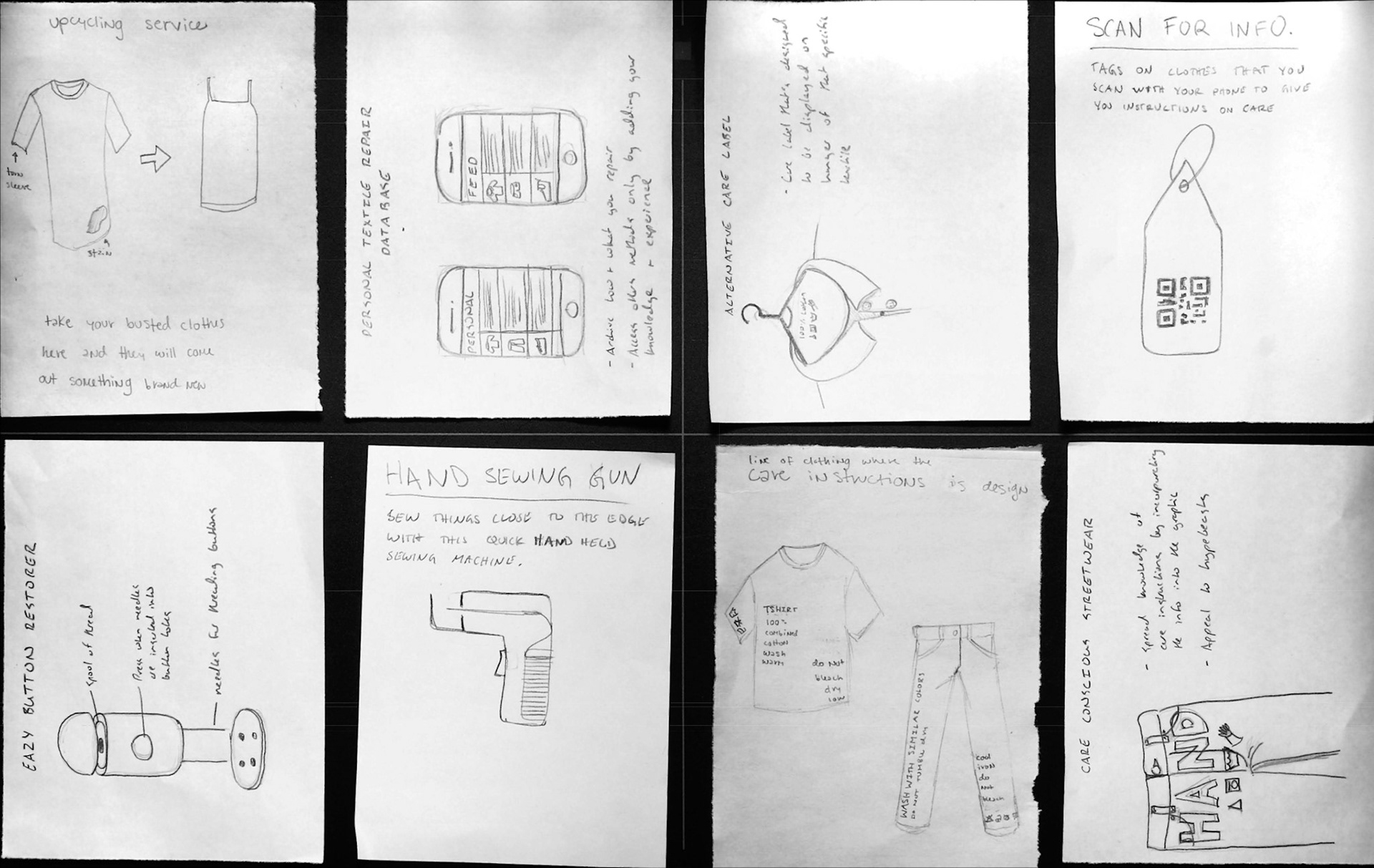
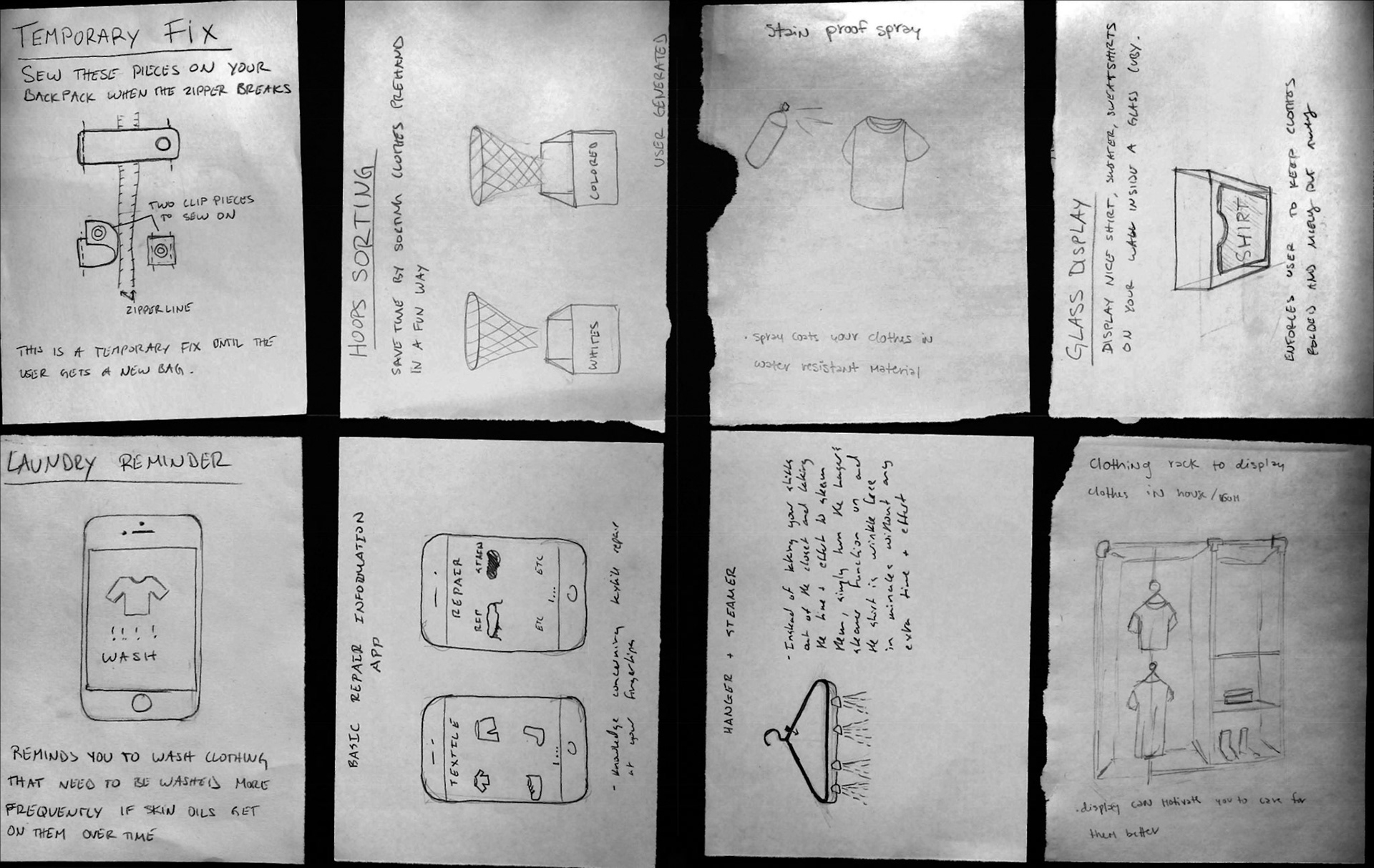
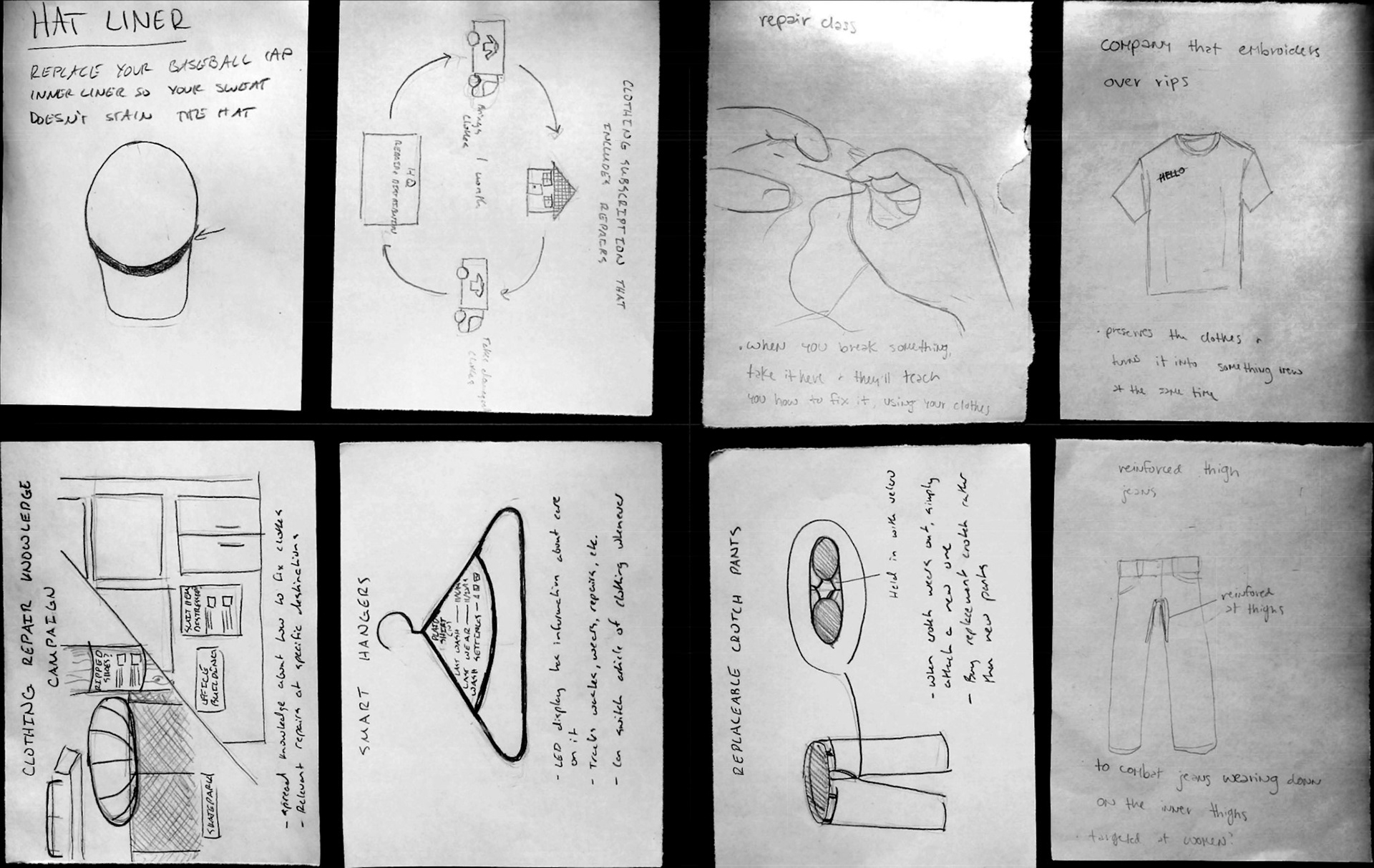
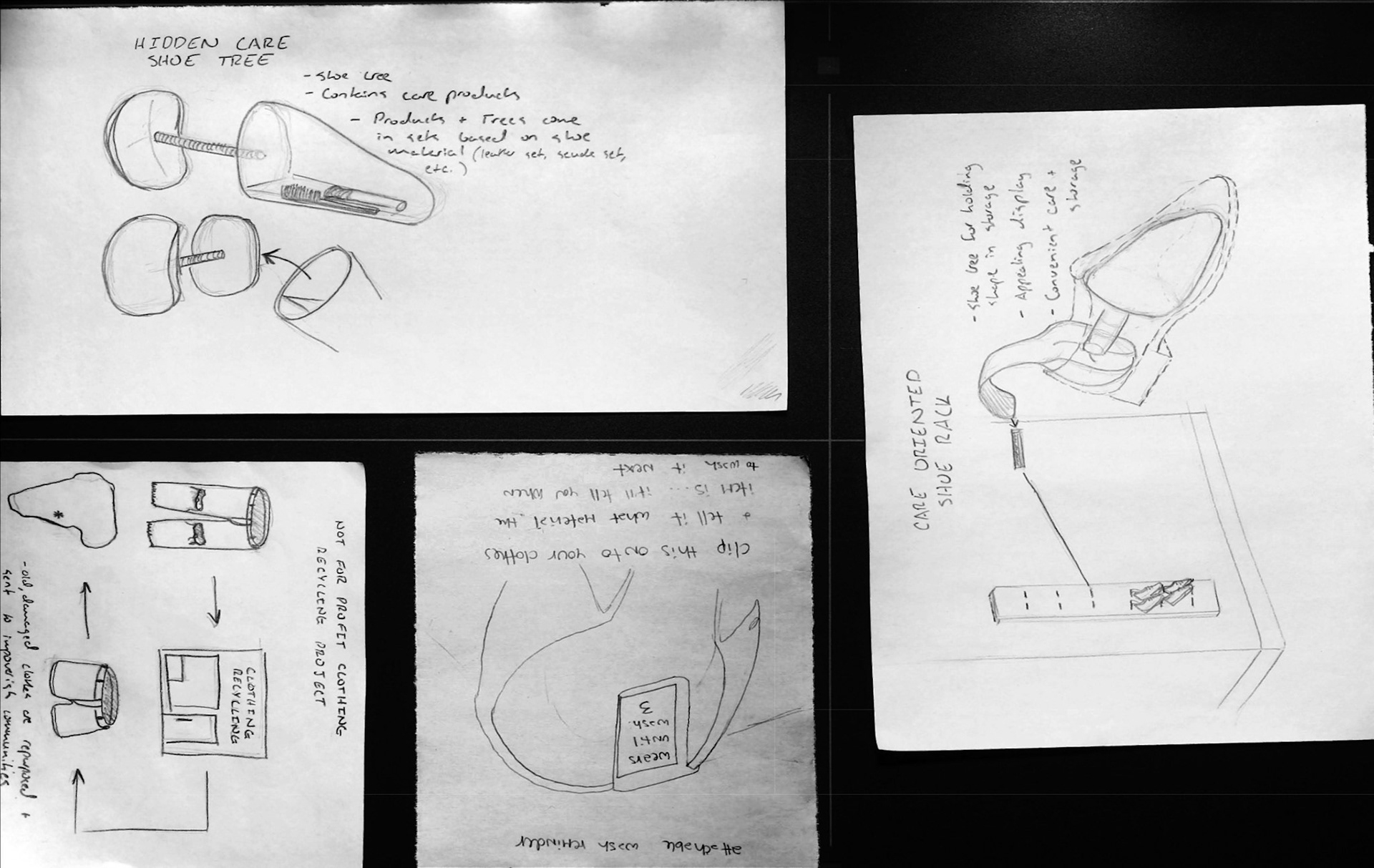
Down Selecting
After careful analysis of our 60 ideas we started narrowing our options by the process of elimination. Our final decision from the top three ideas was the Hanging Care Label.
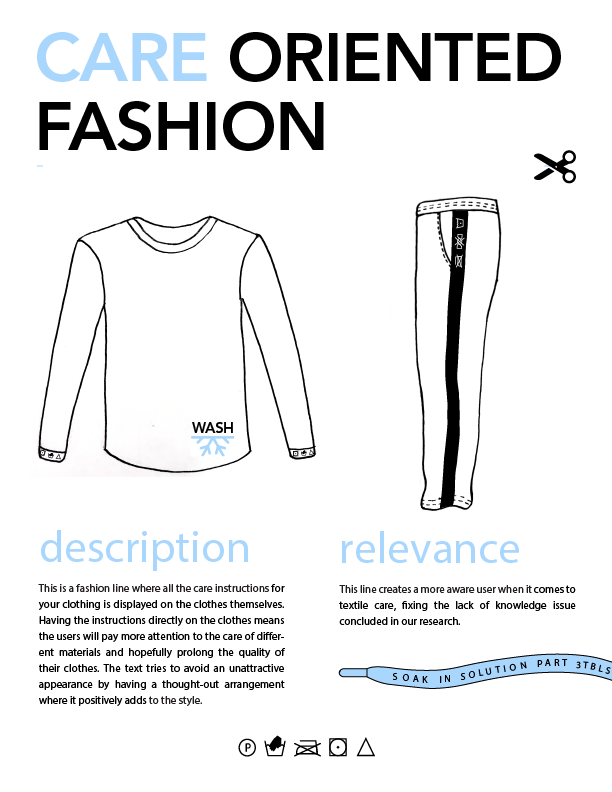
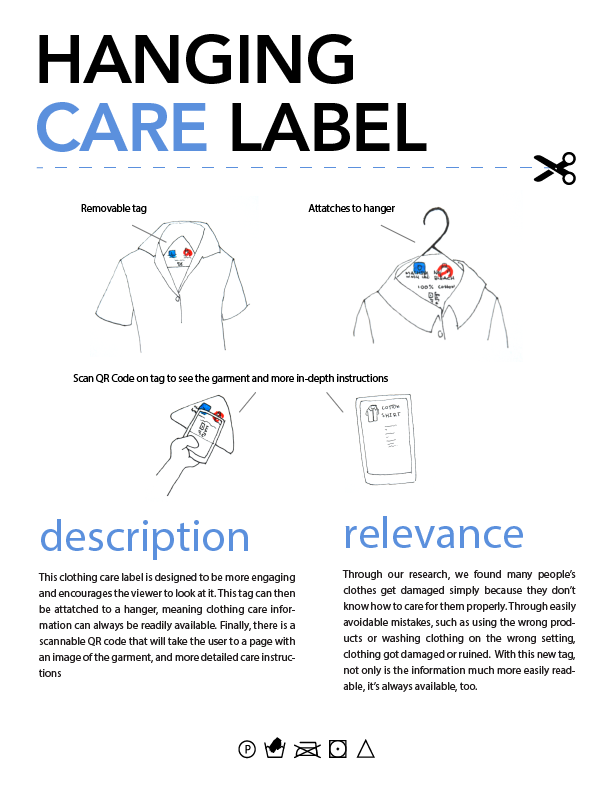
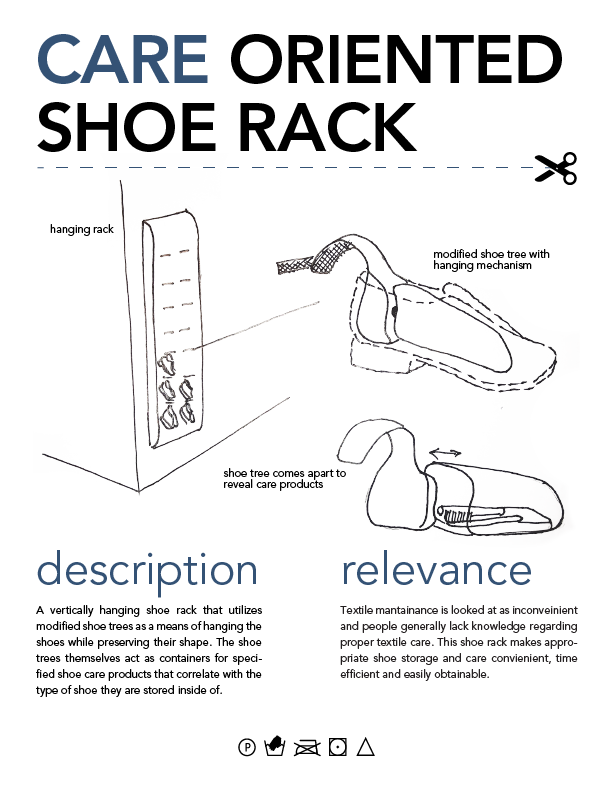
The Solution
Why the Care Label
- It was the best fit to our how might we statements.
- The shoe rack did not provide information care.
- The care fashion line did not provide the affordability for everyone to use.
Workshop Insights
Product Sketching Exercise - Tags should be easily readable, stay in close proximity to companion textiles, and be discreet when worn.
Product Explanation Exercise - Information should be relevant and very clear compared to current care labels. Tags should be easy to keep track of.
Real World Enacting Exercise - If a tag is detachable and does not have a designated storage space then it is likely to be lost and not used.
Updated Parameters
- Must have a designated site to belong
- Must stay in close proximity to associated textile
- Must include a QR code
Conclusion of Additional Research
We had organized this workshop with the goal to find the right physical and informational design for the care label. In the end, our update parameters lead to an unexpected change in our product.
IDEA CHANGE
Although this idea provided very precise information about each garment, it created a problem when it came to doing laundry. The biggest piece of information the product provides is how to wash each garment. We quickly realized people don't inspect each article of dirty laundry and wash them individually, they wash them together. This was the turning point of deciding to make a laundry sorting system.
Storytelling
This storyboard highlights the key concepts of our laundry system. The biggest take away from this story is not the form and design of the physical product, but rather the interaction we hope to provoke between the participant and the system.